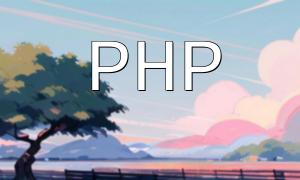Introduction
Image processing is an essential skill in web development, and PHP provides a powerful tool through the GD library. The GD library includes numerous functions that allow developers to create, edit, transform, and save images. This tutorial will show you how to use PHP and the GD library to create a simple image canvas program, guiding you step by step through basic image processing techniques.
Step 1: Installing and Configuring the GD Library
Before getting started, make sure that your PHP environment has GD installed and enabled. Open your `php.ini` configuration file and search for the following line to ensure it's not commented out (no semicolon `;` at the beginning of the line):
extension=gd
If you cannot find this line, manually add it and restart your web server.
Step 2: Creating the Canvas Form
First, create an HTML form that allows users to choose the canvas's width and height, then submit the form to generate the canvas.
<!DOCTYPE html>
<html>
<head>
<title>Canvas</title>
<style>
#canvas {
border: 1px solid #000;
}
</style>
</head>
<body>
<form method="post" action="create_canvas.php">
<label for="width">Width:</label>
<input type="number" id="width" name="width" min="100" max="1000" required><br>
<label for="height">Height:</label>
<input type="number" id="height" name="height" min="100" max="1000" required><br>
<input type="submit" value="Create Canvas">
</form>
</body>
</html>
This form sends a POST request to create_canvas.php and submits the width and height provided by the user.
Step 3: Handling the Canvas Creation Request
In the `create_canvas.php` file, we need to handle the form data and generate an empty canvas based on the user's width and height.
<?php
// Get the width and height parameters
$width = $_POST['width'];
$height = $_POST['height'];
// Create an empty canvas
$canvas = imagecreatetruecolor($width, $height);
?>
Step 4: Rendering the Canvas and Outputting It to the Browser
Next, we'll randomly select a color for each pixel on the canvas and render it.
<?php
// Render the canvas
for ($x = 0; $x < $width; $x++) {
for ($y = 0; $y < $height; $y++) {
$color = imagecolorallocate($canvas, mt_rand(0, 255), mt_rand(0, 255), mt_rand(0, 255));
imagesetpixel($canvas, $x, $y, $color);
}
}
// Output the image to the browser
header('Content-Type: image/png');
imagepng($canvas);
imagedestroy($canvas);
?>
This code will fill the canvas with randomly generated RGB colors and output the image as PNG to the browser using the imagepng function.
Step 5: Testing the Canvas
After completing the above steps, you can view the canvas in your browser. Simply visit `create_canvas.php` to see your basic image canvas.
Conclusion
By following the steps in this article, you’ve learned how to use PHP and the GD library to create a basic image canvas program. From installing GD and creating the form to rendering and outputting the image, you've covered the basics of image processing in PHP. Moving forward, you can extend this program to add more custom features to suit your needs.









